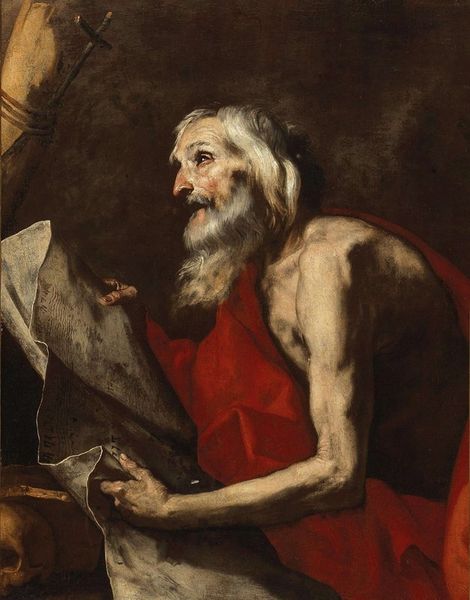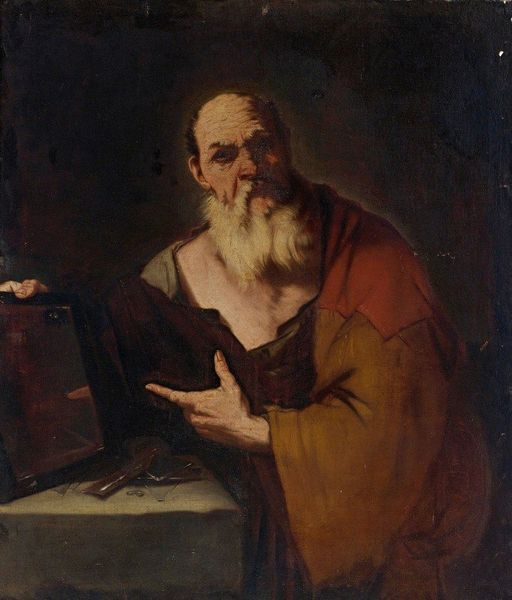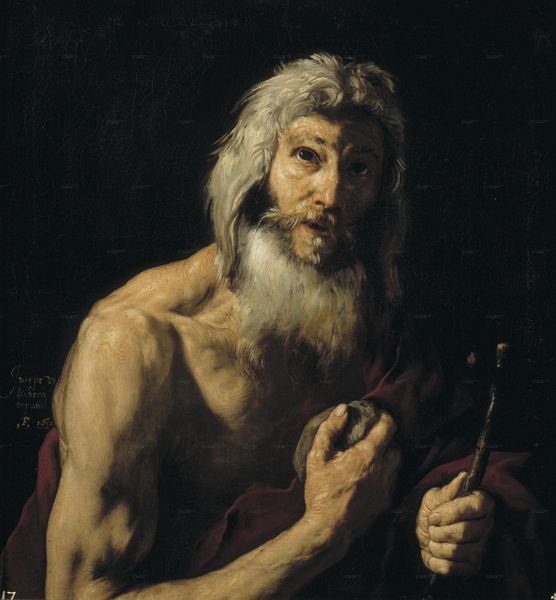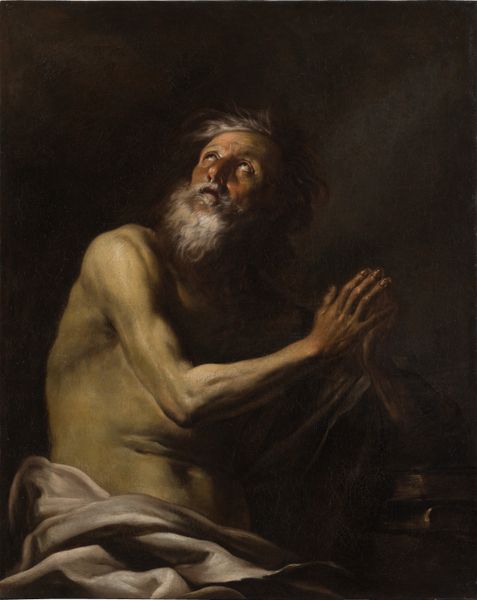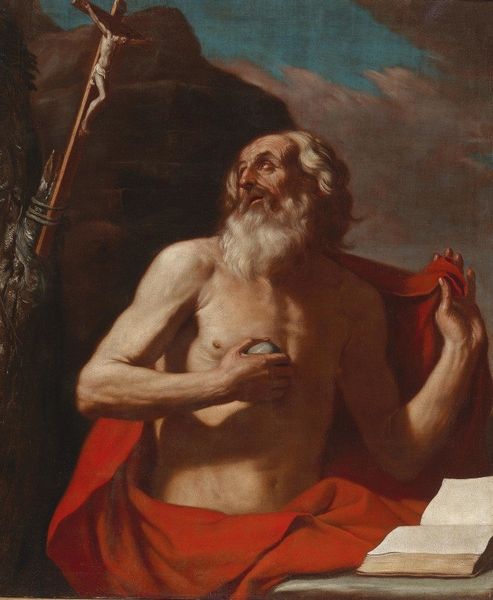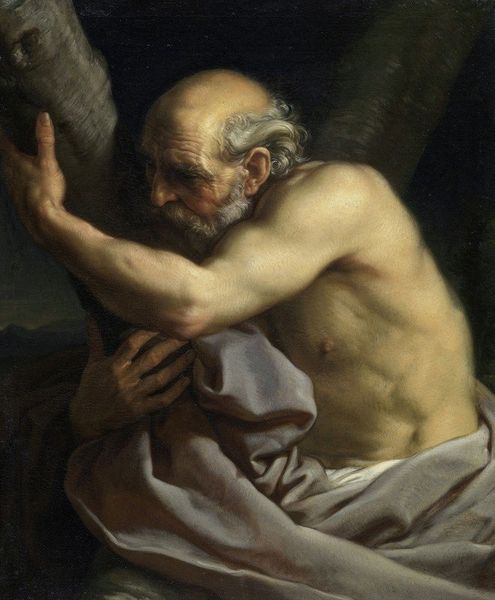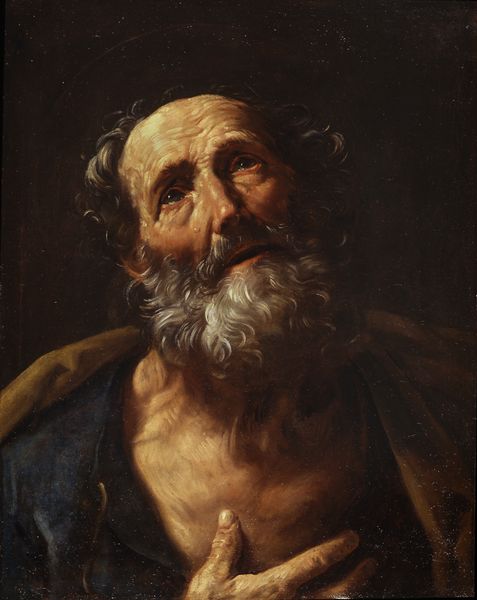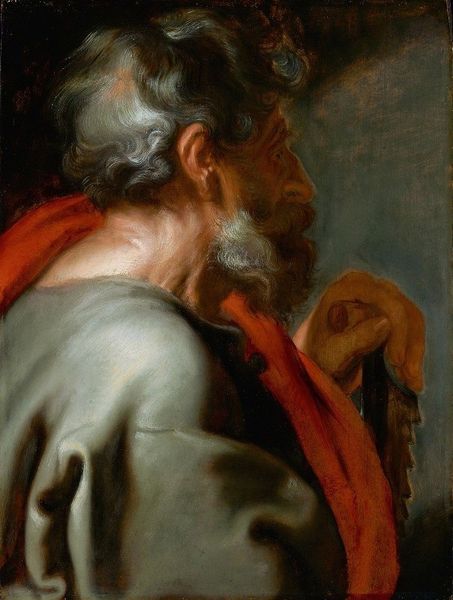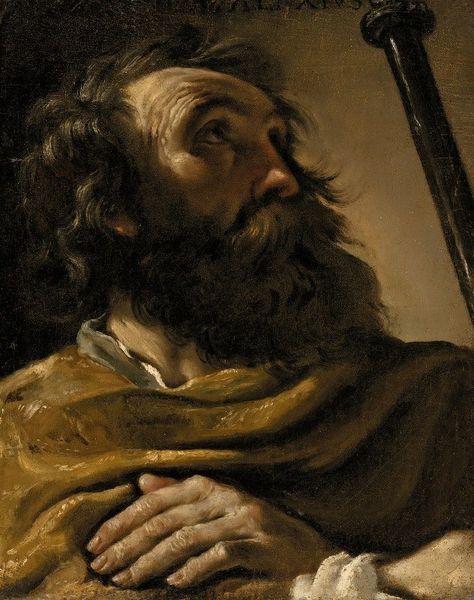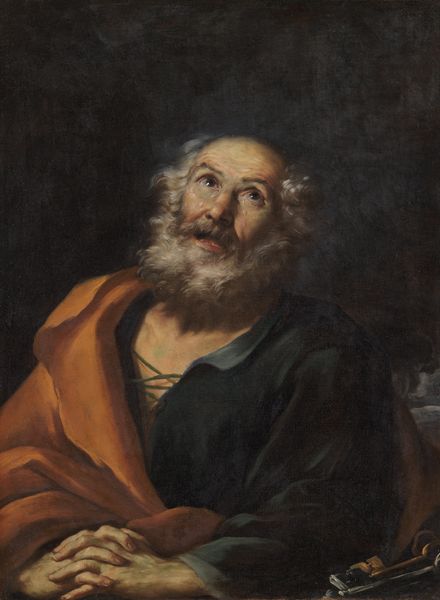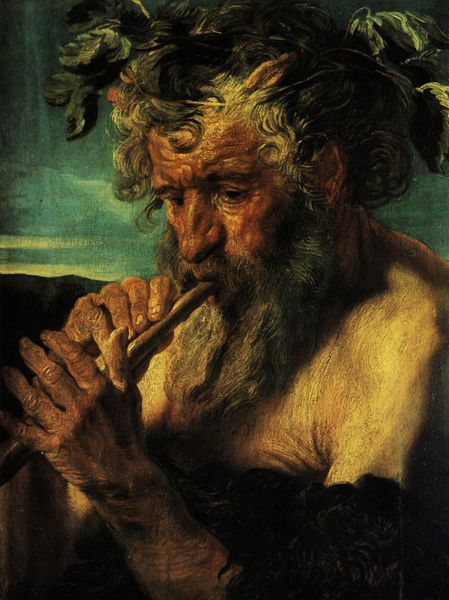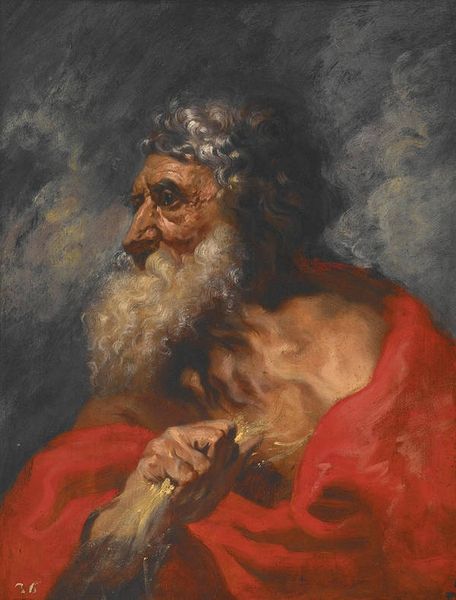
oil-paint
#
portrait
#
figurative
#
baroque
#
oil-paint
#
oil painting
#
portrait drawing
#
history-painting
#
portrait art
Copyright: Public Domain: Artvee
Editor: We’re looking at “Study of a Bearded Man with Hands Raised” by Anthony van Dyck. It’s an oil painting. The figure’s pose and dramatic lighting almost suggest a theatrical performance. What’s your read on this piece? Curator: It’s important to remember the Baroque period’s context: the Catholic Church's patronage, the rise of absolutist monarchies, and this hunger for dramatic art that supported powerful imagery. Van Dyck’s study likely wasn’t just a simple portrait. Do you see how the raised hands, combined with his intense expression, could signify religious ecstasy or even prophetic pronouncements? Editor: Absolutely, his face has so much intensity, and those hands really emphasize whatever he's feeling. How do you think Van Dyck’s style here contributes to this feeling? Curator: Van Dyck worked within the artistic ecosystem of his time. He drew on the Mannerist elongation of figures and Caravaggio's tenebrism, adapting them to portray powerful figures – often in ways that legitimized the ruling classes or conveyed religious power. Think about it – how often did ordinary people have access to images like this? It reinforced a sense of spectacle and awe, impacting social perceptions. The brushstrokes aren’t just capturing light; they’re reinforcing a system of belief. Editor: That makes a lot of sense. I hadn’t really considered how the average person's exposure to these kinds of images would shape their world. Curator: Art is always in dialogue with its context, and its role in society is rarely neutral. Editor: It’s really amazing to think about how a single painting can reflect and shape a whole cultural era. Thanks for sharing your perspective. Curator: My pleasure. It’s these connections that make studying art so rewarding.
Comments
No comments
Be the first to comment and join the conversation on the ultimate creative platform.
